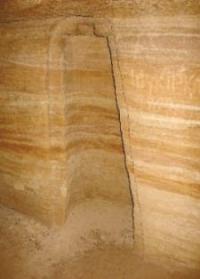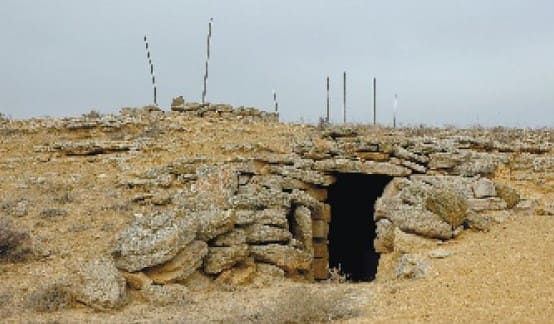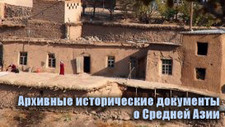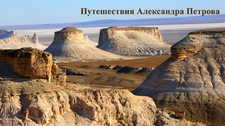You are here
Underground mosque Ishan Khoja.

Ancient mosques and necropolises of Mangyshlak-Ustyurt region.
"The Prophet always helped the poor, the crippled.
When you see the unfortunate, tears of sympathy flow.
It is always painful to see the destitute cripples.
And the gratitude of the cripples, the highest gratitude"
Khikmet Khoja Akhmed Yasawi.
Trip to mosque Ishan Khoja in Mangistau.
Underground mosque Ishan Khoja is located at an altitude of 48 meters above sea level, is located in southwestern part of Tupkaragan peninsula, in southeastern part of ancient cemetery Seydyshan, 14.3 kilometers northeast of city of Fort Shevchenko, 17.3 kilometers northwest of village of Kyzylozen, in Tupkaragan district of Mangistau region.
The mosque is located in the southwestern sector of the necropolis of the same name. There are about 120 burials in the necropolis. According to the results of preliminary studies, most of the burials belong to the Khozha clan; very often, tamgas of this clan are found on the grave structures.
The mosque is carved out on a hilly remnant. The entrance faces the south, reinforced with stonework from the outside. A small corridor leads to the eastern room, perhaps this place was the main room where religious rituals took place. In the middle of the room there is a light opening.
In the southern wall there is a mihrab carved out, facing Mecca. The western room, apparently, served for utility services. Niches for lamps have been preserved on the walls. Along with the name Ishan Khozha, the second name of the monument is Seyid Khozha.
There are extensive research sources on the genesis of the etymology of "Seyid" and "Khozha". To understand the term "Khoja", we must first understand the term "Ovlyad" because Khoja are very closely related to Ovlyad. Ovlyad - translated from Arabic literally means "descendants".
Ovlyads consider themselves descendants of one or another of the Shariyars - four faithful caliphs, the first followers of the Prophet Muhammad. Despite such an obvious predominance of the Sunnism school in our region, most Ovlyads considered Ali, a popular figure among Shiites, as their patron.
Khojas - are part of the Ovlyad group and are considered very authoritative. Khoja - ("master, owner") were divided into several groups, some of which had their starting points in Iran. The largest of the Khoja groups - the Balkhan - was formed in the Balkhan - Mangistau - Khorezm region in the XVIth - XVIIIth centuries and considers the Sufi Garry Alaua to be its ancestor.
As for the Seyids, a small group settled in the XIXth - early XXth centuries on the territory of modern Turkmenistan, Khorezm and Mangistau. The burials located in the necropolis date back to the XVIIIth - XIXth centuries. Based on this dating, we believe that the construction of the mosque dates back to the late XVIIIth - early XIXth centuries.
By decision of the Akimat of the Mangistau region, the Ishan Khoja mosque was accepted for state registration and protection of local importance in 2002.
Geographic coordinates of underground mosque Ishan Khoja: N44 ° 23'19 E50 ° 19'41
Authority and photographs by:
Otynshy Koshbayuly, Murat Kalmenov. "Underground mosques of Mangistau". Olketanymdyk basylym. Almaty, Publishing house "Orkhon". 2009. 160 p.







